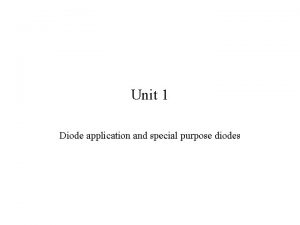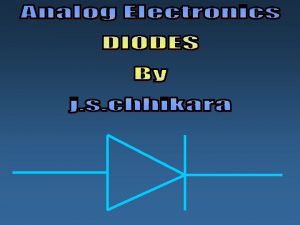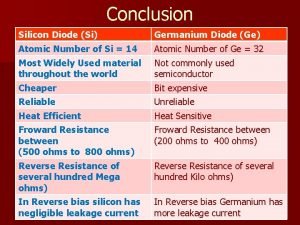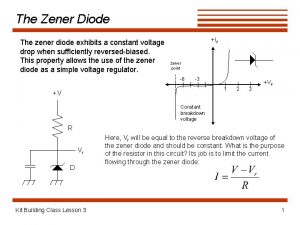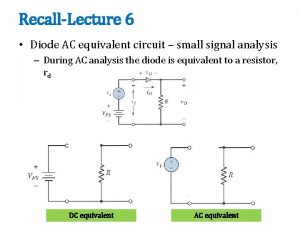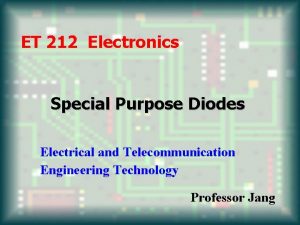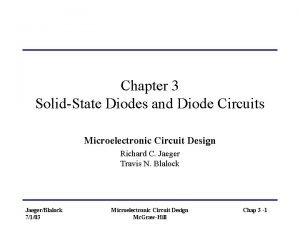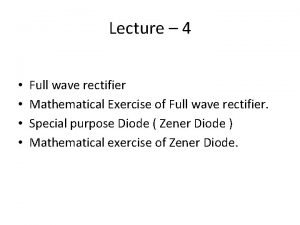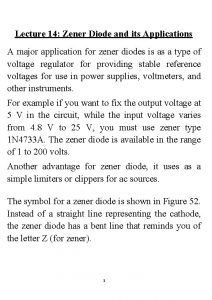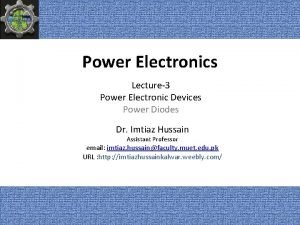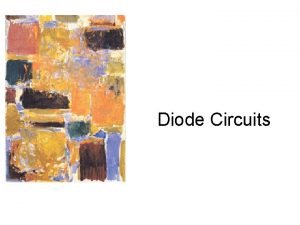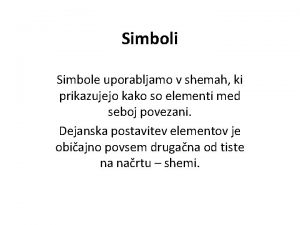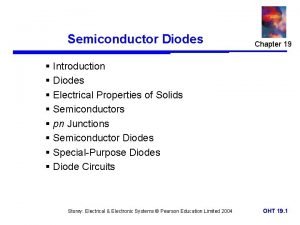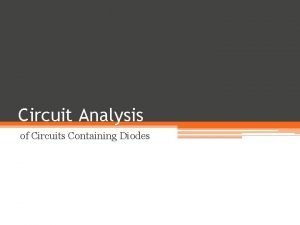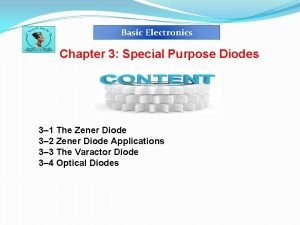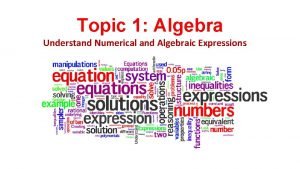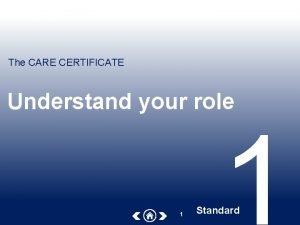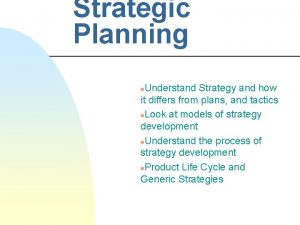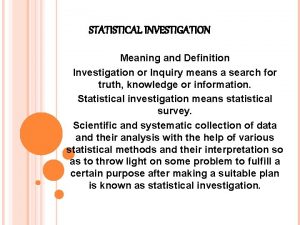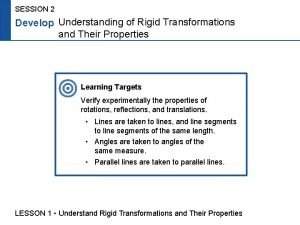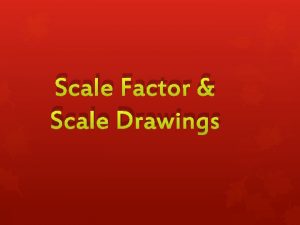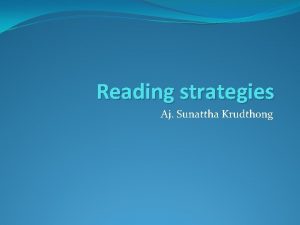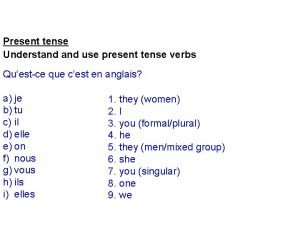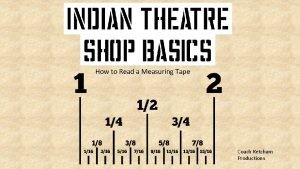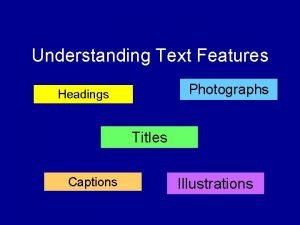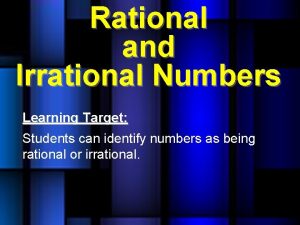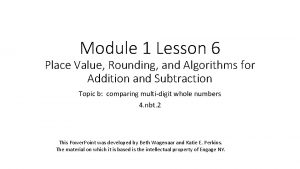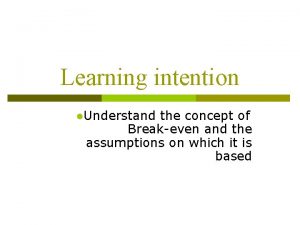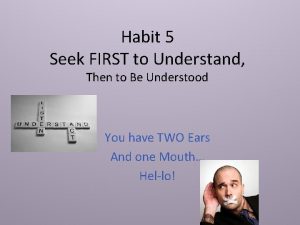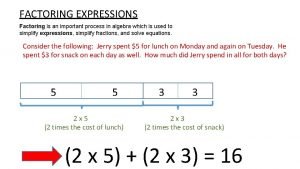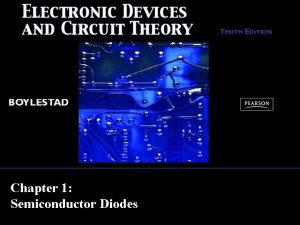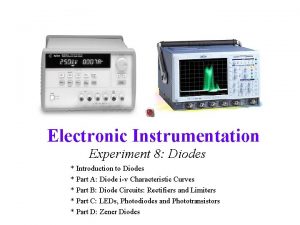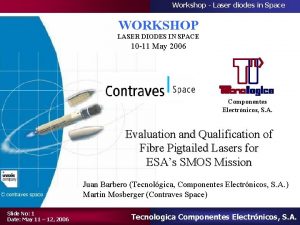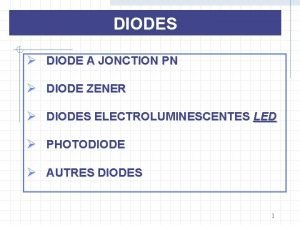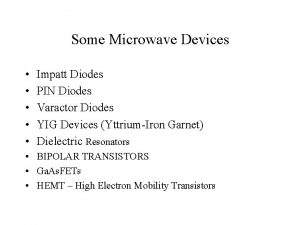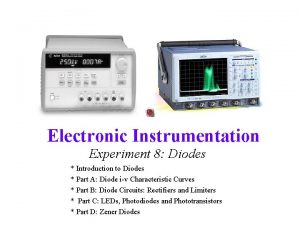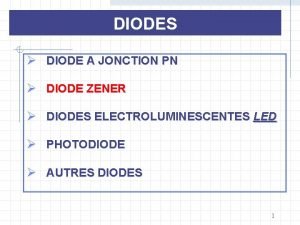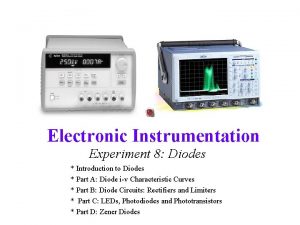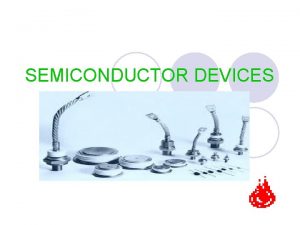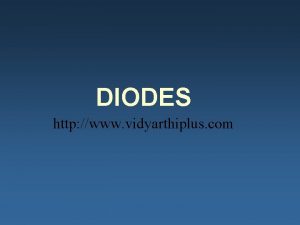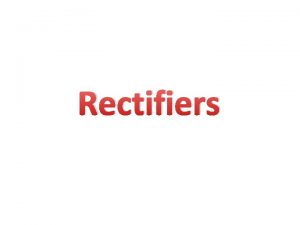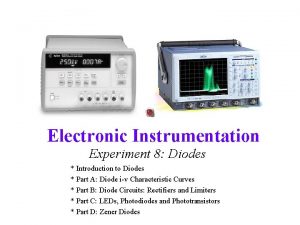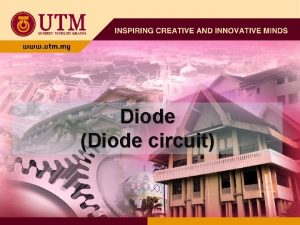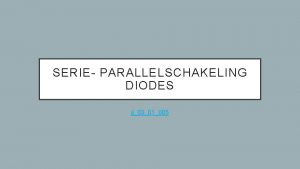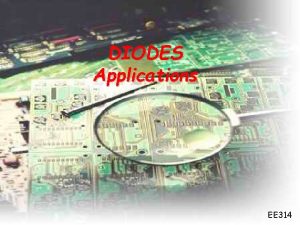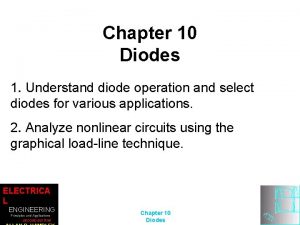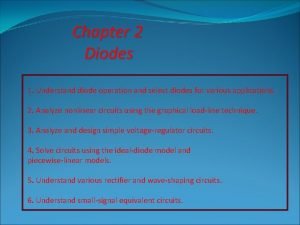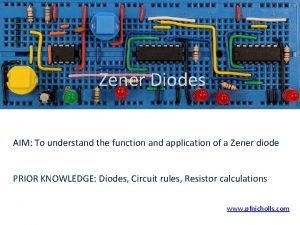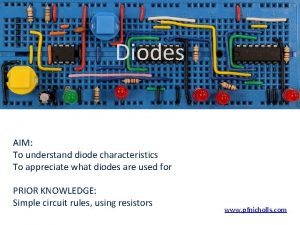Chapter 10 Diodes Chapter 10 Diodes 1 Understand



























































- Slides: 59

Chapter 10 Diodes

Chapter 10 Diodes 1. Understand diode operation and select diodes for various applications. 2. Analyze nonlinear circuits using the graphical load-line technique.

3. Analyze and design simple voltage-regulator circuits. 4. Solve circuits using the ideal-diode model and piecewise-linear models. 5. Understand various rectifier and wave-shaping circuits. 6. Understand small-signal equivalent circuits.



Shockley Equation k = 1. 38 × 10– 23 J/K is Boltzmann’s constant and q = 1. 60 × 10– 19 C is the magnitude of the electrical charge of an electron, n is the emission coefficient (between 1 and 2). Is is the saturation current. At a temperature of 300 K, we have

Zener Diodes that are intended to operate in the breakdown region are called Zener diodes.


LOAD-LINE ANALYSIS OF DIODE CIRCUITS





ZENER-DIODE VOLTAGEREGULATOR CIRCUITS A voltage regulator circuit provides a nearly constant voltage to a load from a variable source.



Load-Line Analysis of Complex Circuits





IDEAL-DIODE MODEL The ideal diode acts as a short circuit forward currents and as an open circuit with reverse voltage applied.

Assumed States for Analysis of Ideal-Diode Circuits 1. Assume a state for each diode, either on (i. e. , a short circuit) or off (i. e. , an open circuit). For n diodes there are 2 n possible combinations of diode states. 2. Analyze the circuit to determine the current through the diodes assumed to be on and the voltage across the diodes assumed to be off.

3. Check to see if the result is consistent with the assumed state for each diode. Current must flow in the forward direction for diodes assumed to be on. Furthermore, the voltage across the diodes assumed to be off must be positive at the cathode (i. e. , reverse bias). 4. If the results are consistent with the assumed states, the analysis is finished. Otherwise, return to step 1 and choose a different combination of diode states.




PIECEWISE-LINEAR DIODE MODELS












Peak Inverse Voltage An important aspect of rectifier circuits is the peak inverse voltage (PIV) across the diodes. The capacitance required for a full-wave rectifier is given by:










LINEAR SMALL-SIGNAL EQUIVALENT CIRCUITS The small-signal equivalent circuit for a diode is a resistance.



Notation for Currents and Voltages in Electronic Circuits § v. D and i. D represent the total instantaneous diode voltage and current. At times, we may wish to emphasize the time-varying nature of these quantities, and then we use v. D(t) and i. D(t) § VDQ and IDQ represent the dc diode current and voltage at the quiescent point.

§ vd and id represent the (small) ac signals. If we wish to emphasize their time varying nature, we use vd(t) and id(t).





Problem Set • 6, 8, 15, 19, 29, 32, 34, 41, 51, 62, 70, 73
 To understand recursion you must understand recursion
To understand recursion you must understand recursion Diodes
Diodes Special purpose diode
Special purpose diode What are diodes made of
What are diodes made of Conclusion of diode characteristics
Conclusion of diode characteristics Zener diode exhibit
Zener diode exhibit Equivalent circuit of zener diode
Equivalent circuit of zener diode What are special purpose diodes
What are special purpose diodes Solid state diode definition
Solid state diode definition Full wave rectifier
Full wave rectifier Zener diode application
Zener diode application Diode symbol
Diode symbol Vt diode
Vt diode Termistor simbol
Termistor simbol Introduction to diodes
Introduction to diodes Circuit analysis with diodes
Circuit analysis with diodes Special purpose diodes
Special purpose diodes It helps us understand people and society
It helps us understand people and society Quran
Quran Understand quran
Understand quran Understand quran and salah the easy way
Understand quran and salah the easy way Understand algebraic expressions
Understand algebraic expressions Understand your role
Understand your role Understand strategy
Understand strategy Statistical enquiry means........
Statistical enquiry means........ Understand quran and salah easy way short course#2 pdf
Understand quran and salah easy way short course#2 pdf Rigid transformation review
Rigid transformation review Understanding scale drawings
Understanding scale drawings The author point out in the passage that erosion in america
The author point out in the passage that erosion in america Group studied is smaller and not randomly selected
Group studied is smaller and not randomly selected Je, tu, il/elle nous, vous, ils/elles endings
Je, tu, il/elle nous, vous, ils/elles endings Examples of people as media
Examples of people as media Seeking to understand
Seeking to understand Make me understand
Make me understand What order is used when placing events on a timeline
What order is used when placing events on a timeline Learn quran and salah the easy way
Learn quran and salah the easy way Understand quran and salah
Understand quran and salah Www.understandquran.com
Www.understandquran.com Www.understand quran and salah
Www.understand quran and salah We must first seek to understand
We must first seek to understand How to understand and apply the old testament
How to understand and apply the old testament How to understand a measuring tape
How to understand a measuring tape What does critical reading mean
What does critical reading mean How can paleontologists help us understand the past
How can paleontologists help us understand the past What is a comparative adjective
What is a comparative adjective Photograph text feature
Photograph text feature Kud teaching
Kud teaching Understanding quran and salah the easy way
Understanding quran and salah the easy way Can a real number be both rational and irrational
Can a real number be both rational and irrational Lesson 6 understand decimal place value answer key
Lesson 6 understand decimal place value answer key L understand
L understand Understand employer organisations
Understand employer organisations 6151 san luis gonzaga
6151 san luis gonzaga Listen or thy tongue will make thee deaf
Listen or thy tongue will make thee deaf Seek first to understand then to be understood activities
Seek first to understand then to be understood activities Can we understand god
Can we understand god Understand algebraic expressions iready
Understand algebraic expressions iready 15g + 20h distributive property
15g + 20h distributive property Make me understand
Make me understand What is difference between actual self and ideal self
What is difference between actual self and ideal self


